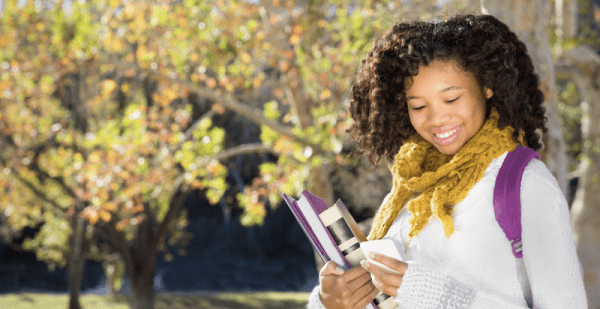What Can We Learn about Black Girls’ Use of Social Media for In-School Learning?

written by Dr. Michelle Meggs
With a growing interest in the educational space focused on designing accessible and inclusive digital learning opportunities through materials and digital public infrastructure, developers, educators, and researchers need to understand the experiences of those students who are most deprived of equitable outcomes in education. According to the 2019 Nation’s Report Card, Black girls score the lowest in literacy and technology proficiency out of their gender peer group in the United States.[1] Insights from the 2019 Nation’s Report Card reading score results prompted a roundtable convening with researchers, teachers, and adolescent Black girls to examine connections between Black girl literacies, social media, and education.
This fall, New America convened a small group of researchers, teachers, and adolescent Black girls to explore Black girls’ use of informal literacy practices on social media and the implications of this use for in-school learning. The first in a two-part series, this convening highlighted the challenges and advantages of social media among Black girls and identified tangible skills that are acquired through its use.
Participants for the roundtable included media literacy experts, scholars of Black girl literacies, Black feminist scholars, middle and high school STEM and English language arts (ELA) teachers, and Black girls between the ages 13 and 18. The diversity of the participants allowed for insight from multiple perspectives. Participants had the opportunity to discuss Black girl literacy concepts and the type of literacy practices teens utilize on social media apps. Following the discussion, each breakout group was charged with designing an open social media platform that could be integrated into schools for learning.
Defining Black Girl Literacies (BGL)
The roundtable opened with defining and conceptualizing the term “Black girl literacies.” The term was coined by researchers Gholnecsar E. Muhammad and Marcelle Haddix, and put forward alongside a conceptual framework they developed in the journal English Education.[2] Their research yielded six central themes and concepts known as the Black Girl Literacies (BGL) framework from reviewing over three decades of literature focused on Black girls’ literacy practices. Each concept centers Black girls in the context of literacy with reading, writing, discussing, and performing.
The BGL framework describes practices that are:
- Multiple in practice, incorporating the use of multimodal text for learning;
- Tied to identities, attaching elements of socio-cultural literacy with language and identity into practice;
- Historical, making connections with past and present uses of literacy;
- Collaborative, creating opportunities for collaboration, communication, and engagement;
- Intellectual, educating and enhancing proficiency as well as achievement; and
- Political and critical, allowing space for students to analyze, advocate, and civically engage on issues that impact them and their community.

Connection of BGL to Culturally Responsive Education
After discussing the term “Black girl literacies,” participants reflected on its connection with culturally responsive education (CRE). According to a 2002 article published by Geneva Gay in the Journal of Teacher Education, CRE involves centering the experiences and knowledge of historically marginalized students in classroom instruction.[3] One participant expressed how CRE creates inclusive agency of cultures with Black girls through youth voice and participation. This participant felt that it was a practical approach for building cultural understanding between diverse groups, which leads to creating a more inclusive school community. Another participant, a STEM teacher for the middle grades, said CRE allowed him to establish cross-cultural experiences from across different subject areas with his BIPOC students and other teachers to build community in his school. The STEM teacher said that he began to ask himself, “What can I do as a science teacher that aligns with the ELA class, to better support my students holistically while collaborating with other teachers?” Other participants shared how culturally responsive learning environments embrace students’ needs and foster a community of inclusion. One participant said that in order for a community of inclusion to be established, collaboration is key and at the heart of BGL.
In addition to collaboration, participants said that celebrating identities was another connection between BGL and CRE. They said CRE provided the opportunity for students and teachers to learn from others about their culture. The teachers all shared the same sentiment: Their classroom engagement should reflect who they teach as much as what they teach. Participants pointed out that CRE and BGL both incorporate students’ languages, backgrounds, and experiences, which are all tied to their identities. “Students need to know that their backgrounds are accepted and acknowledged in the classroom,” said one teacher. For that reason, she ensures that everyone in her class is represented in discussions and materials. “CRE is not critical race theory,” asserted another teacher, “but it is important to practice CRE and integrate BGL to better understand and support each of your students.”